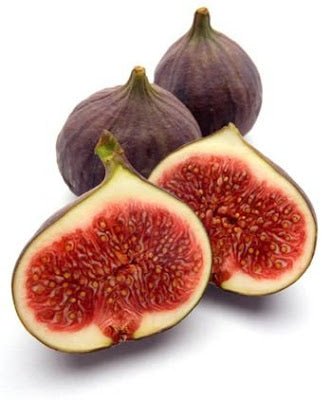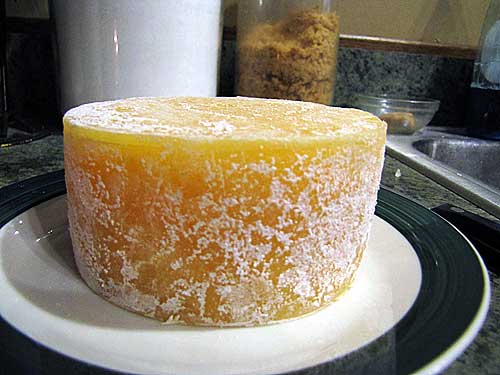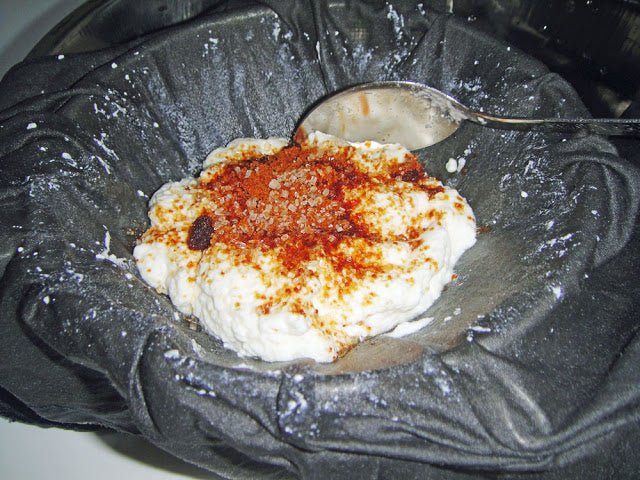
I wrote this last month, so you can chalk it up to March Madness! We get kind of crazy around here at the end of a long, hard winter! But, here’s the thing-folks are always asking us how they can make their own rennet. I don’t know why. Maybe it’s because so many home cheese makers are dyed-in-the-wool do-it-yourselfers.
So, I was going to do a post about that subject, but I soon realized that there are so many ways to make rennet that I would have to write at least 5 articles (which I will probably eventually do!)

In the cheese forums, folks frequently ask about using fig juice. I initially thought that if I did an article about that, it would only be useful to folks in Mediterranean countries. But I discovered that the United States, Turkey, Greece and Spain are the main producers of dried figs. Within the US, figs are commercially grown in California, Texas, Utah, Oregon and Washington.
So, I started my research and I found out there really isn’t much information online about using fig juice to coagulate milk. In fact, pretty much everything I could find is in this article!
What is fig juice?

Fig juice/sap/latex is the milky stuff that comes off a fig tree branch in much the same way that sap comes off a maple tree. However, before you go running out to your backyard, heed this warning- it can be very toxic to folks who are sensitive to it, resulting in a terrible rash. So, be safe and wear gloves. (On the other hand, if you have a wart, you could try placing one drop of fig latex on it because supposedly that will make it disappear!)

Apparently, this is powerful stuff. In the 1988 Second Kenya National Seminar on Agroforestry, there is mention of fig juice:
Ficus latex contains a natural proteolytic enzyme, ficin, which in combination with other enzymes present, can be used to coagulate the protein in milk, similar to rennet for the preparation of cheeses and junkets, and in medicines. clotting activity of fresh fig latex from F. carica is 30-100 times that of animal rennet.
When & where was it used as rennet?

Ancient Romans knew about it
Soldiers would have known they could use the juice of the fig tree as a rennet from the Iliad. For example, Homer writes in book five when Ares has been speared and blood flows from his wound:
“even as the juice of the fig speedily maketh to grow the white milk that is liquid but is quickly curdled as a man stirreth it, even so swiftly healed the furious Ares.”

16th century Italians appear to have used it in addition to calf rennet
One takes six parts of this rennet (veal) and two of strong acid and one of milk from fig leaves and one mixes it well together, and this mixture has a miraculous effect, it makes that the cheese made with this rennet never spoils; because the milk of the fig and the vinegar conserves it from every putrefaction; it is like aqua vita what keeps wine and doesn’t let it become corrupt, and these are the ultimate and grand secrets of nature; and if one well attends to matters of little importance nevertheless in these one finds the high and great rational secrets. (From a translation of 16th Century Italian Cheese Recipes).
Relatively recently, there seems to be renewed interest in it

One study (2002) by the Food Engineering Dept. at Gaziantep University in Turkey compares cheese made with calf rennet to cheese made with fig juice
The results of triangle tests indicated that the difference between Gaziantep cheese made with rennet and enzyme preparation obtained from ion-exchange chromatography, was not significant (P < 0.05). Organoleptic tests showed that there was no significant difference in acidity, bitterness, creaminess, off-flavour and graininess with the LSD method (P < 0.05). It was concluded that fig tree latex is suitable as a chymosin substitute, and could be used in Gaziantep cheese production.

Another 2010 study in the International Journal of Food Properties was done with ewe’s milk and the results were similar
Plant coagulant induced shorter gelation time compared to chymosin however required longer time for restructuration (end of coagulation).The coagulum obtained with the latex of Ficus carica (fig juice)had a higher yield, owing to its high water retention capacity. With the exception of color, the overall sensory attributes did not show significant differences among coagulants.)

It’s not all good news
Kosikowski in Cheese and Fermented Milk Foods, p.393 is not particularly encouraging. About making rennet:
Substitutes were sought from plants, including ficin from the fig tree, papain from the papaya tree, and bromelin from pineapple. The resulting cheeses were extremely bitter due to the excessive proteolytic activities of the enzymes. In addition, considerable activity was retained after heating to 80C, and all required a higher milk setting temperature in the vat.
How is it used? There are many different ways to extract and use the fig latex.

The ancient sources, in this case Aristotle, even tell us the way fig juice, in ancient Greek opos, was harvested:
“The juices flowing from an incision in green bark is caught on some wool. The wool is then washed and rinsed into a little milk, and if this be mixed with other milk it curdles it.”
According to a study published in the Pakistan Journal of Nutrition (2003)
Sikma cheese is mainly produced from sheep milk using rennet within 1-2 hr. Fig juice had been used previously for curd formation for sikma cheese. Fig juice was dried on a cloth and stored, when required it was dissolved in warm milk and then used in cheese production. This method has been completely abandoned now.

The Center for New Crops & Plant Products, at Purdue University mentions this in their fig section
Latex: The latex contains caoutchouc (2.4%), resin, albumin, cerin, sugar and malic acid, rennin, proteolytic enzymes, diastase, esterase, lipase, catalase, and peroxidase.It is collected at its peak of activity in early morning, dried and powdered for use in coagulating milk to make cheese and junket. From it can be isolated the protein-digesting enzyme ficin which is used for tenderizing meat, rendering fat, and clarifying beverages.

In a lighter vein, here’s an entry from 2010 in the Cheese Forum, in answer to the question of whether fig juice can be used as rennet
Yes, you need to collect the sap and use that. It’s a milky white sort of liquid. A good way is to cut some twigs, make lateral cuts to pierce the outer layers, and soak in water. You don’t need to use very much – ficin in a strong enzyme.Something like 4-5 drops of the pure sap will set up a gallon of milk. It’s easier to use leaves if you have them. You can cut the large leaves and drip the sap into a catch vessel.

This is not the kind of fig tree we’re talking about, but it is very cool!
And, finally, this entry in the fig section at vitamins-minerals-supplements.org
For preparing the rennet, the latex is collected in the early morning hours when both the yield and the enzyme activity are high. A solid preparation may be obtained from the latex (which contain rennin, proteolytic enzymes, diastase, esterase, lipase, catalase and peroxidase apart from sugar, malic acid etc.) by direct drying in vacuum where a white solid is obtained. One c.c. of the latex yields 0.10 to 0.15 g of the dry powder which retains 90-95% of the activity originally present in the latex for several months at room temperature, more if ascorbic acid is added.
Conclusion
This is tentative, at best, but if you really want to try it:
- Put on rubber or latex gloves.
- Extract fig juice/sap/latex from the branches of unripe figs in the morning.
- Transfer it to your milk by one of 3 methods:
- Squeeze a few drops directly into your milk if the sap is really running.
- Rub it into a piece of sterilized cloth and rinse it out in your milk.
- Stir your milk with a cut branch.
- Let the milk set for up to 12 hours, checking it periodically for the clean break.
- Take pictures and let us know how this has worked for you! (info@cheesemaking.com)














































































































































